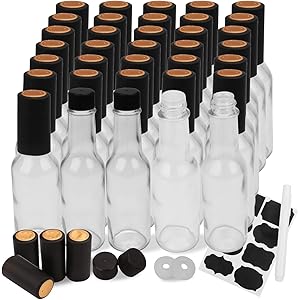Understanding Brettanomyces
Brettanomyces, often referred to as “Brett,” is a genus of yeast that plays a significant role in the fermentation process of various alcoholic beverages, particularly in beer and wine. This yeast is known for its unique flavor contributions, which can range from fruity and floral to funky and earthy. However, understanding the optimal temperature conditions for controlling Brettanomyces is crucial for brewers and winemakers alike.
What Temperature Kills Brettanomyces?
The temperature at which Brettanomyces is effectively killed varies, but generally, exposure to temperatures above 140°F (60°C) can significantly reduce its viability. This temperature threshold is essential for those looking to sanitize equipment or ingredients that may harbor this yeast. However, it’s important to note that while high temperatures can kill Brettanomyces, they may also affect the overall quality of the beverage if not managed properly.
Thermal Death Point of Brettanomyces
The thermal death point of Brettanomyces is a critical factor in brewing and winemaking. Studies have shown that prolonged exposure to temperatures around 140°F (60°C) for a minimum of 10 minutes can effectively eliminate this yeast. However, the exact time required can vary based on the specific strain of Brettanomyces and the medium in which it resides. Understanding these nuances is vital for effective microbial control.
Impact of Temperature on Brettanomyces Growth
Brettanomyces thrives in a wide range of temperatures, typically between 60°F (15°C) and 80°F (27°C). At these temperatures, it can contribute to the complex flavors that many brewers and winemakers seek. However, when temperatures exceed 80°F (27°C), the yeast can become more aggressive, potentially leading to off-flavors and spoilage. Therefore, managing fermentation temperatures is essential for maintaining the desired flavor profile.
Sanitization Techniques Against Brettanomyces
To effectively kill Brettanomyces, brewers often employ various sanitization techniques. Heat sanitization, as mentioned, involves exposing equipment to high temperatures. Chemical sanitizers, such as sodium metabisulfite or peracetic acid, can also be used, but it’s crucial to follow the manufacturer’s instructions to ensure effectiveness. Understanding the right combination of temperature and sanitization method is key to preventing Brettanomyces contamination.
Get more content like this!
Sign up to receive updates and new terms first hand.
Effects of High Temperatures on Beer and Wine
While high temperatures can kill Brettanomyces, they can also have detrimental effects on the quality of beer and wine. Elevated temperatures during fermentation can lead to the production of undesirable compounds, such as fusel alcohols and esters, which can negatively impact the final product. Therefore, brewers must strike a balance between controlling Brettanomyces and preserving the integrity of their beverages.
Monitoring Temperature During Fermentation
Monitoring fermentation temperatures is crucial for managing Brettanomyces activity. Brewers often use temperature control systems to maintain optimal conditions throughout the fermentation process. This proactive approach not only helps in controlling Brettanomyces but also enhances the overall quality of the beer or wine. Regular temperature checks and adjustments can prevent the yeast from becoming too dominant.
Strain Variability in Brettanomyces
Different strains of Brettanomyces exhibit varying levels of heat resistance. Some strains may survive higher temperatures, while others may be more susceptible to thermal death. Understanding the specific strain present in a fermentation can help brewers make informed decisions regarding temperature management and sanitization practices. This knowledge is essential for achieving the desired flavor profile without unwanted Brettanomyces influence.
Practical Applications for Brewers
For brewers and winemakers, understanding what temperature kills Brettanomyces is not just academic; it has practical applications in production. By implementing effective temperature control and sanitization methods, producers can minimize the risk of Brettanomyces spoilage while maximizing the unique flavors it can contribute. This knowledge empowers brewers to create high-quality products that meet consumer expectations.
Conclusion on Brettanomyces Management
In summary, managing Brettanomyces requires a comprehensive understanding of its thermal death point, growth conditions, and the impact of temperature on the fermentation process. By applying this knowledge, brewers and winemakers can effectively control this yeast, ensuring the production of high-quality beverages that showcase the best of their craft.




